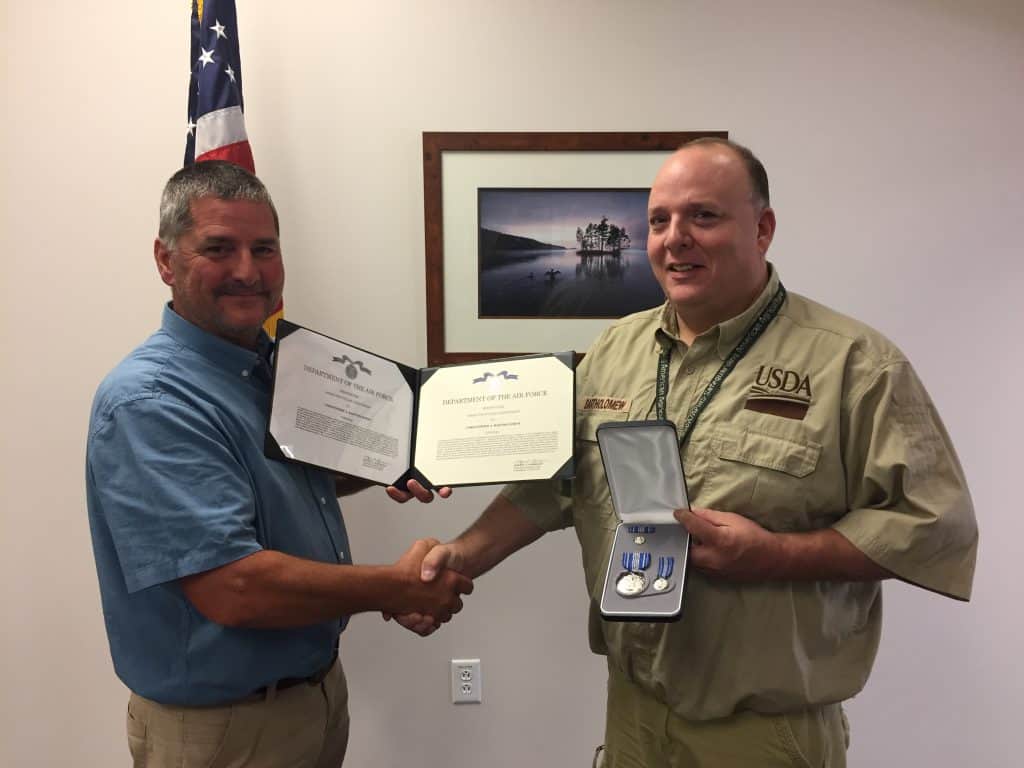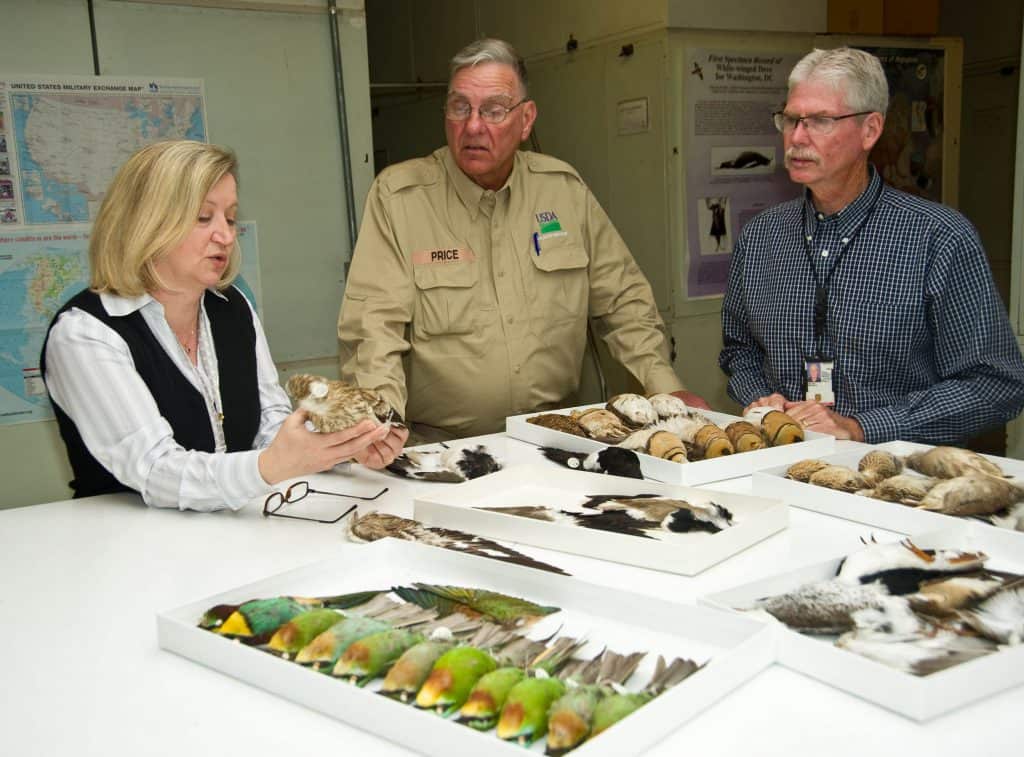Share this article
Using wildlife skills to support military
In September Wildlife Services in Ohio welcomed a colleague, wildlife specialist Chris Bartholomew, on his return from Afghanistan. They marked the occasion by presenting him, at the military’s request, with the Air Force Award for Civilian Achievement, earned for his work at Bagram Airfield from March 31 to August 7, serving as the base’s lead for its Bird/Wildlife Aircraft Strike Hazard (BASH) Program.
This wasn’t Bartholomew’s first Afghanistan tour. He served four-month deployments at Bagram in 2013 and Kandahar in 2015. This year more than 152,000 birds and wildlife were handled, most by dispersal, at the largest regional U.S. military airbase, located in Parwan Province.
“His diligence resulted in only one damaging aircraft strike during the peak migratory season,” the award noted. He trained three flight safety teams at Bagram, Jalalabad and Kandahar Airfields, enabled more than 800 patrol hours, and offered habitat management advice to reduce threats to combat flight operations. He also surveyed Herat Airfield, proposing similar advice.
Bartholomew appreciates working with the military overseas, saying “It’s a chance to focus on doing your job, try new techniques, and testing everything you’ve learned.
“You immediately are accepted as part of the Safety Team family,” he explained, “and you clearly understand how important the mission is.” He also enjoyed dealing with new, sometimes similar, wildlife: jackals instead of coyote; mynas; 40-pound porcupines with foot-long quills; and camel spiders.
He is one of 45 Wildlife Services biologists and specialists who have volunteered for deployments to the SW Asia (Iraq, Kyrgyzstan and undisclosed locations) where they have assisted active military air operations since November 2009. Two others, George Graves and Scott Stopak both of Idaho, also volunteered three times. The volunteers — men and women — have ranged in age from 23 to 63, came from at least 25 states, and included 6 CWB®. Some work at civil or military airports domestically.
All the volunteers pointed to a desire use their skills as wildlifers to support the American military. As we near Veterans Day, I wanted to take this opportunity to thank these volunteers, and the more than 170 WS employees who are also veterans, for their service.

Wildlife specialist Christopher Bartholomew receives the US Air Force award for civilian achievement from WS-Ohio state director Andy Montoney. Bartholomew has volunteered for three 4-month deployments to reduce wildlife hazards to aviation in Afghanistan. ©Wildlife Services

In 2015 at Bagram Airfield, Afghanistan, Matthew Gage, WS-Oklahoma biologist, sets out traps to manage animals and birds that cause a risk to flight line and aircraft operations. ©U.S. Air Force

During an overlap in deployment, four WS biologists connect in the theater of operations: Megan Baker (AK), Matt Miller (IN), Lee Taylor (TN), and Russ Urasaki (HI). ©Wildlife Services

Two of the early volunteers, Keel Price (NM) and George Graves (ID) look over samples of birds in the Smithsonian Institution Feather Identification Lab with National Museum of Natural History Research Scientist and lab manger Dr. Carla Dove. WS biologists regularly submit specimens in conjunction with their BASH deployments in Asia. ©USDA
Wildlife Services is a Strategic Partner of The Wildlife Society.
Header Image: In a 2013 habitat-management project to reduce attractants, WS-Alaska biologist Luke Barto treats phragmites on a pond next to a base runway in Afghanistan. The vegetation is an aviation hazard because it offers various birds roosts, cover and a food source including insects. At overseas and domestic airfields, controlled burns are used once the phragmites dead and dried out. ©U. S. Air Force








